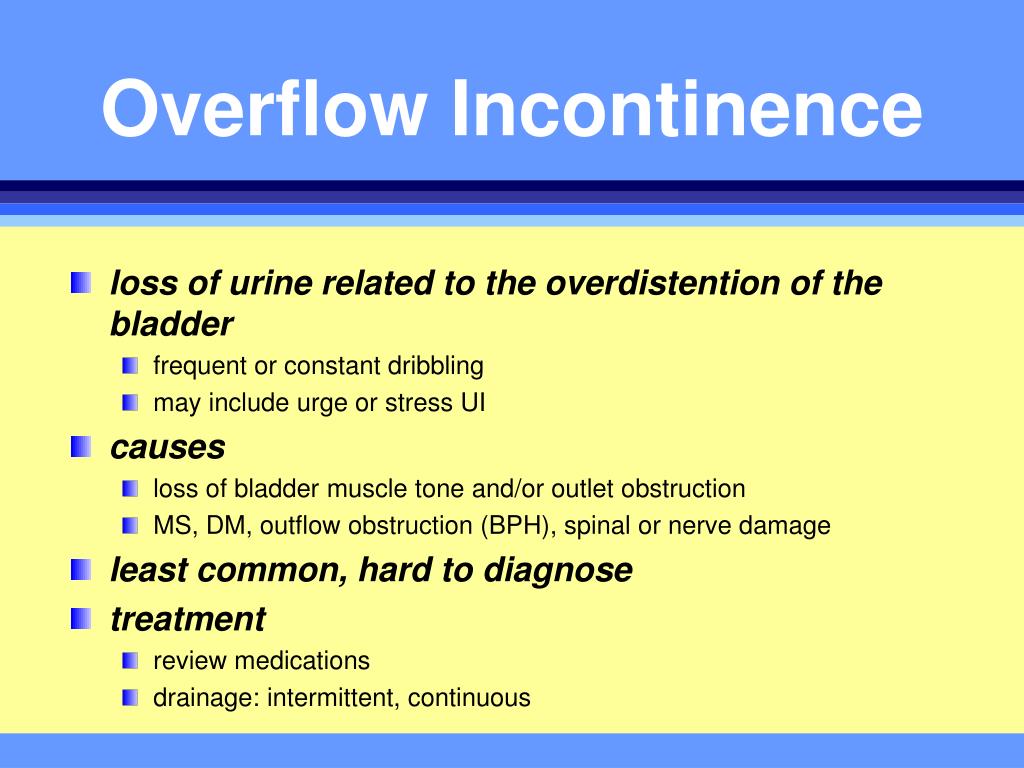
#OVERFLOW INCONTINENCE MANUAL#
Treatment requires manual digital manipulation of the external and internal tissues of the pelvis, vagina and/or rectum. Patients typically attend in-office appointments 2-3 times per week for a duration of 12 weeks. There are a wide range of issues that can arise from weakness in the muscles of the pelvic floor or around the organs inside the pelvis such as urinary frequency, urgency or problems with incontinence and interstitial cystitis. Treatment of the pelvic floor is a specialized aspect of physical and occupational therapy. Risks of using catheters include infection or possible leakage during use. After your bladder empties, you throw the catheter away.

#OVERFLOW INCONTINENCE FULL#
Dealing with urinary incontinence without treatment can affect the emotional, psychological and social life – those who suffer are not able to live their full lives, afraid to stray too far from a toilet.Ī catheter is a flexible tube placed in your bladder.


The Urology Care Foundation, official foundation of the American Urological Association, says many people who have urinary incontinence don’t tell anyone about their symptoms they’re embarrassed and believe nothing can be done, and so suffer in silence. While physical discomfort affects your daily life, the emotional stress of dealing with urinary incontinence is an important factor to consider. If urinary incontinence goes untreated, it can lead to infections and other problems. Gender and age are not the only factors – according to the Urology Care Foundation, risk factors of getting urinary incontinence include:


 0 kommentar(er)
0 kommentar(er)
